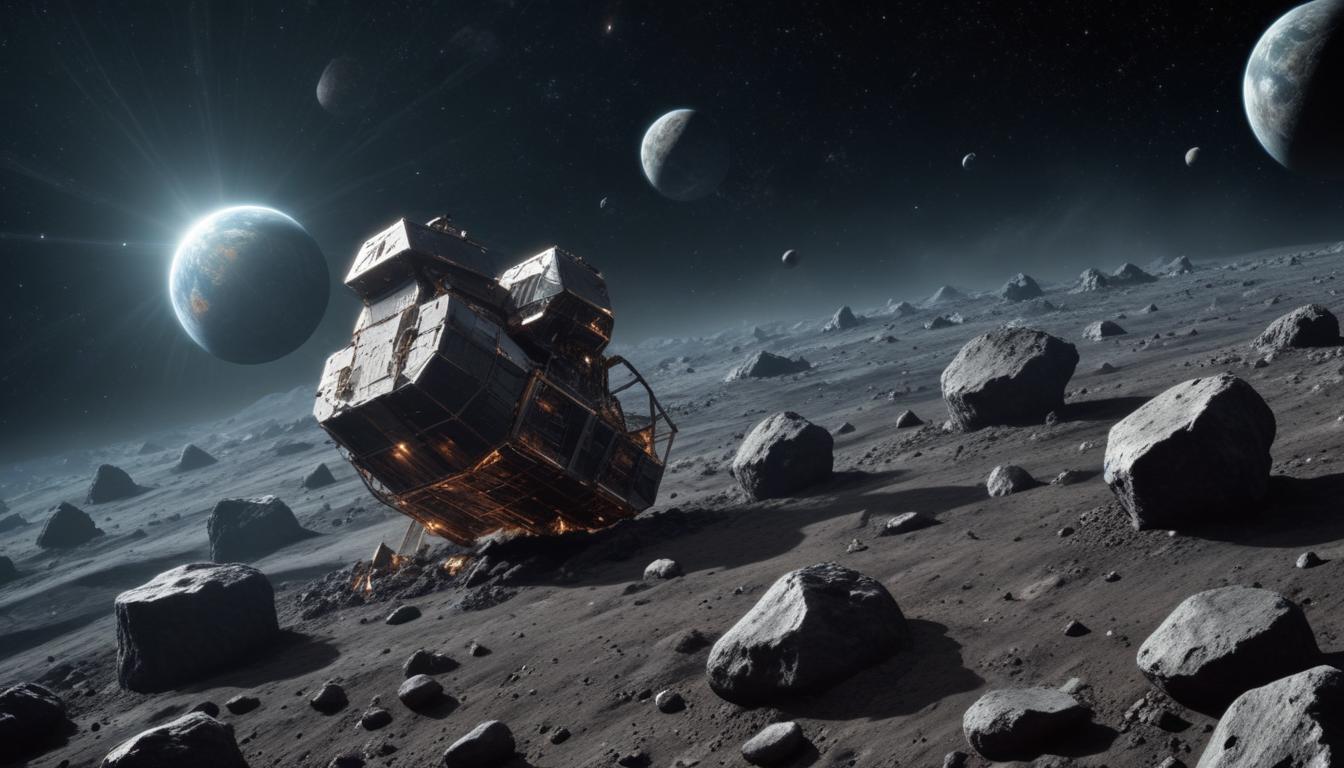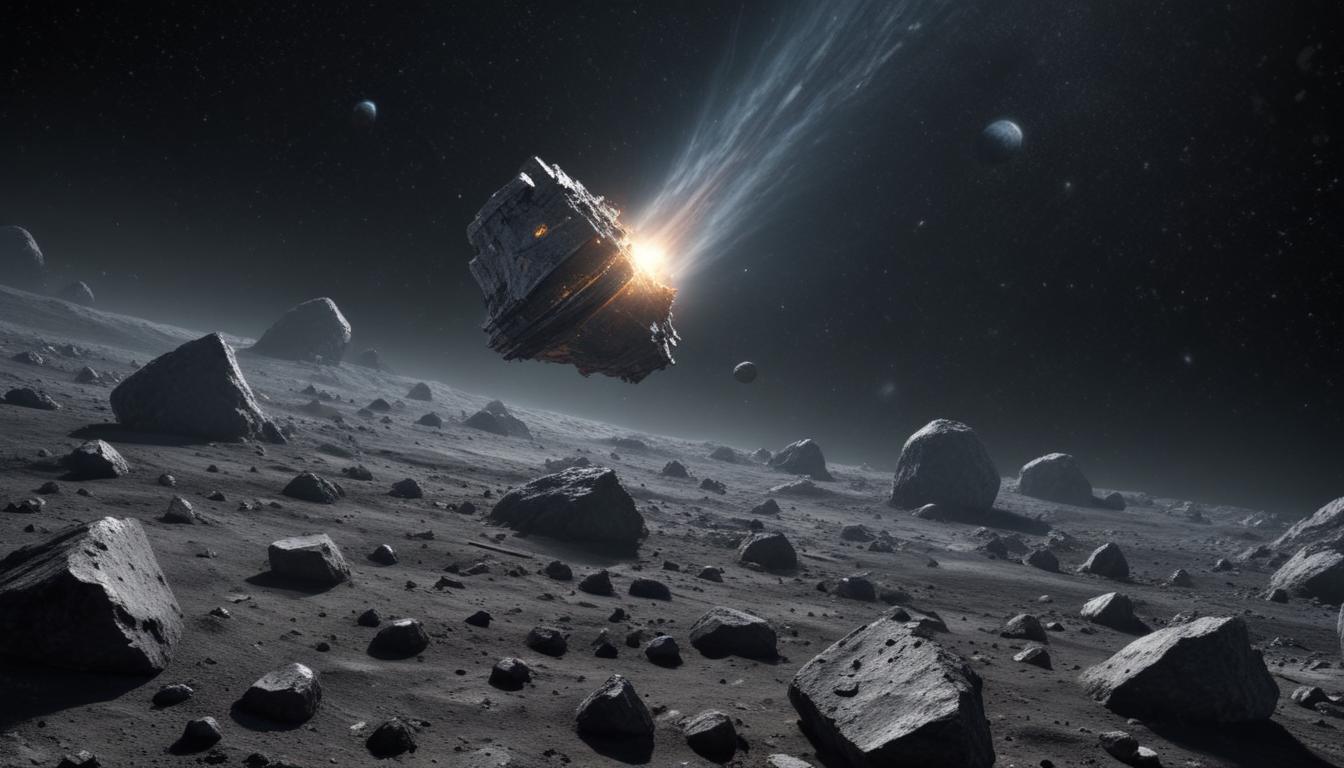Now Reading: Asteroid Mining The Next Gold Rush
- 01
Asteroid Mining The Next Gold Rush
Asteroid Mining The Next Gold Rush

Asteroid Mining Resources from Space
Are you concerned about the future of our planet’s resources? Every day, the technology we rely on—from smartphones and electric cars to green energy solutions—demands more rare and precious metals. Yet, on Earth, these materials are becoming scarcer, more expensive, and more environmentally damaging to extract. This growing resource crisis puts our technological progress and economic stability at risk. Imagine a future where this limitation no longer exists, where we have access to a virtually infinite supply of the raw materials needed to build a sustainable and prosperous world.
The solution isn’t buried deeper in the Earth’s crust; it’s floating in the vast expanse of space. Asteroid mining represents a monumental leap forward, offering a path to unlock the immense wealth of the solar system. These celestial bodies are packed with valuable resources, from platinum and gold to iron and water. By tapping into this cosmic treasure trove, we can not only fuel our industries for centuries to come but also kickstart a new era of human exploration and build a robust economy beyond our home planet. This isn’t science fiction; it’s the next frontier of industry.
Why Mine Asteroids The Answer to Earths Shortages
The primary driver for asteroid mining is the staggering concentration of valuable materials found on them. Here on Earth, precious metals like platinum, rhodium, and palladium are incredibly rare because they are heavy elements that sank to the planet’s core during its formation. Asteroids, however, are the unaltered remnants of the solar system’s birth. They never underwent this differentiation process, meaning these valuable materials are distributed throughout their structure, making them far more accessible. A single, small, platinum-rich asteroid could contain more platinum group metals than have ever been mined in human history.
Beyond precious metals, asteroids are rich in industrial staples like iron, nickel, and cobalt, the very building blocks of modern infrastructure. Even more critical for a future in space is the presence of water ice. Water is the “oil of space”—it can be broken down into hydrogen and oxygen to create breathable air and, more importantly, rocket propellant. Access to water in space dramatically reduces the cost of space missions, as fuel would no longer need to be launched out of Earth’s heavy gravity well. This opens the door for building in-space refueling stations, manufacturing hubs, and permanent human settlements on the Moon and Mars.
The Treasure Map of the Solar System Identifying Prime Targets
Not all asteroids are created equal. Scientists classify them into several types, each offering a unique set of resources. C-type (carbonaceous) asteroids are the most common, making up about 75% of the known population. They are rich in water and carbon, making them ideal targets for life support and propellant production. S-type (silicaceous) asteroids are stony bodies that contain significant amounts of industrial metals like iron and nickel. The most tantalizing targets, however, are the rare M-type (metallic) asteroids. These are believed to be the exposed iron-nickel cores of ancient protoplanets, and they are essentially giant, flying chunks of pure metal.
The most practical targets for early missions are not in the main Asteroid Belt between Mars and Jupiter, but are the thousands of Near-Earth Asteroids (NEAs). These objects have orbits that bring them relatively close to our planet, making them far more accessible in terms of travel time and energy costs. Prospecting for the most promising candidates involves a combination of ground-based telescopes and robotic space probes. Missions like NASA’s OSIRIS-REx and Japan’s Hayabusa2 have already successfully visited NEAs and returned samples, proving that we have the technology to reach, study, and interact with these celestial bodies. These missions are creating the first detailed resource maps of our cosmic backyard.

The Challenges and The Future of Space Prospecting
While the promise of asteroid mining is immense, the path forward is filled with formidable challenges. The financial investment required is astronomical, with missions costing billions of dollars before a single ounce of material is returned. Developing the technology for fully autonomous robotic mining, processing, and transportation systems that can operate in the harsh environment of space is a monumental engineering feat. From grappling with a spinning asteroid to refining ore in zero gravity, every step presents novel problems that must be solved. Furthermore, the legal framework for space resource extraction is still in its infancy. Questions of ownership, mining rights, and international law remain complex and largely unresolved.
Despite these hurdles, the future of space prospecting is bright. A new generation of private companies, backed by visionary investors, is actively developing the technologies needed to make asteroid mining a reality. These pioneers are working on everything from advanced propulsion systems to sophisticated robotic prospectors. The long-term vision extends beyond simply returning resources to Earth. It imagines a self-sustaining “in-space economy” where materials mined from asteroids are used to build and service satellites, construct space habitats, and fuel missions to Mars and beyond. Asteroid mining isn’t just about solving Earth’s problems; it’s about giving humanity the tools to build a permanent, thriving presence in the cosmos.


































